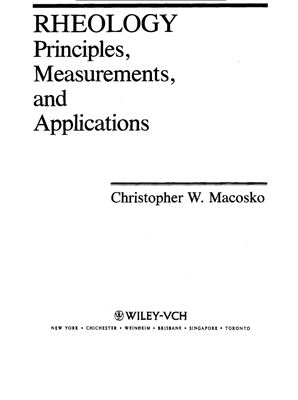Wiley-VCH, 1994. 568p.
If you use rheological measurements to characterize new materials, analyze non-Newtonian flow problems, or design plastic parts, or if you would like to use rheology to overcome a particular problem, this pragmatic volume will prove invaluable to your research.
Rheology: Principles, Measurements, and Applications presents an extremly practical, timely, and accessible three-dimensional account of this subject. It has been specifically designed to enable researchers to understand and apply information from the latest rheological literature to their own applications.
Divided into three sections, the book covers the essential criteria for selecting the best test types for various applications, for accurately interpreting results, and for determining other areas where rheology and rheological phenomena may be useful in your work.
This book will be of greatest interest to polymer scientists and mechanical engineers, as well as students in these and related fields.
If you use rheological measurements to characterize new materials, analyze non-Newtonian flow problems, or design plastic parts, or if you would like to use rheology to overcome a particular problem, this pragmatic volume will prove invaluable to your research.
Rheology: Principles, Measurements, and Applications presents an extremly practical, timely, and accessible three-dimensional account of this subject. It has been specifically designed to enable researchers to understand and apply information from the latest rheological literature to their own applications.
Divided into three sections, the book covers the essential criteria for selecting the best test types for various applications, for accurately interpreting results, and for determining other areas where rheology and rheological phenomena may be useful in your work.
This book will be of greatest interest to polymer scientists and mechanical engineers, as well as students in these and related fields.

